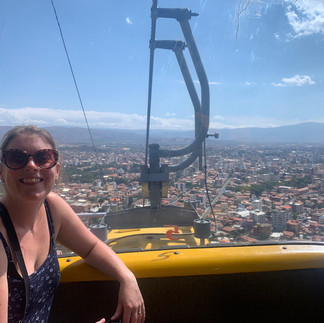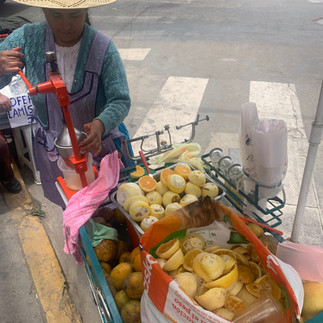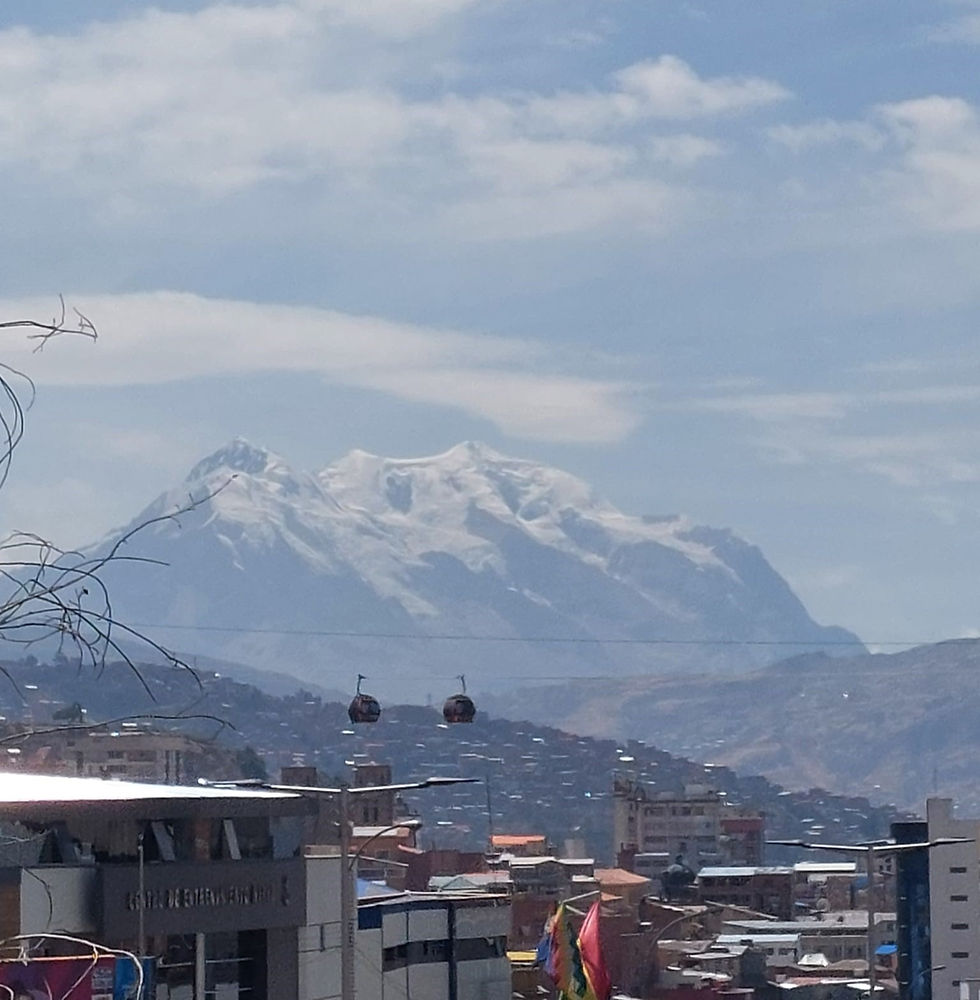Cochabamba, Bolivia travel guide | Best things to do there
- Dave Jackson

- Nov 13, 2022
- 5 min read
Updated: Mar 1, 2023
In all honesty Cochabamba hadn’t featured during our Bolivian planning and we first heard of it from other travellers whilst in Santa Cruz. An overnight bus ride from La Paz and Santa Cruz, it sounded like a nice stop to break up what otherwise is a very long journey.

Cochabamba is actually Bolivia’s 4th largest city with 630,000 inhabitants sitting at an elevation of 2558m (which is another good reason to stop on the way to La Paz, to help with acclimatisation, as just arriving at 3600m some people suffer with altitude sickness). It also has a reputation as being the gastronomic capital of the country (click here to view our Bolivian food & drink post)! I’ll be honest and say now that we didn’t find the food here to be incredible, certainly not stand-out compared to other places we visited but perhaps with a bit more time and research (or money as I believe there are some Michelin star restaurants here) you can find hidden gems here.
Table of contents
Things to do in Cochabamba
Teleférico up to Monumento Cristo de la Concordia
Cochabambinos are very proud of their Christ statue and will immediately inform you that Cristo de la Concordia is taller than Christ Redeemer in Rio (it’s currently the 2nd tallest Christ statue in the world behind Christ the Protector, but it was for a while the tallest) standing at 33m & 44cm. Both Christ Redeemer in Rio & Cristo de la Concordia are said to have been made to that height as each 1m represents a year of Christ’s life. However, the Cochabambinos justify their one-upmanship of their extra 44cm as Christ lived for just over 33 years!
There are steps up to the monument, but we were advised by the hostel not to walk up there day or night as it ‘wasn’t safe for tourists’. To be fair, even if it was safe I’m not sure I’d choose that route, with 2000 steps to get up there & no shade you would likely spend nearly as much money trying to rehydrate as the cost of the cable car!
The cable car up to Cristo de la Concordia is a very reasonable 13Bs (£1.60/$1.40) per person, compared to its brother in Rio it’s an absolute steal! As Cochabamba doesn’t have the same tourist appeal as Rio, you’ll likely get you’re Instagram shot much easier. When we were there, it was extremely quiet with only around 20 people up there, giving it a much more relaxing feel, with many of the people up there actually there to pray or meditate.

The view of Cochabamba & the surrounding Andes is very special, however I would have to admit the view of the Rio coastline is better.

La Cancha
A massive market on the streets selling everything, similar to El Alto market in La Paz it’s nice to have a wander around & purchase some fruit & veg. We have been informed the food served at the market is good & great to have a chat with the locals. However, like with most of these markets it is best not to eat from them until you are a good month into your South America travels when your stomachs have hardened a little (which we weren’t so decided against it).
Plaza de 14 Septiember
Like most of South America the city of Cochabamba is set out in a block system & the central Plaza is named after a historic event in the countries road to independence. The central Plaza is a beautiful spot which is great for people watching or to purchase some seeds too feed the pigeons, as many of the locals do to pass some time on a sunny afternoon. The square is beautifully lit during the evening & is a great spot to grab some street food.
History of the date 14th September
14th September is actually Cochabamba day which is so named after an independence attempt by the indigenous of Bolivia in 1810. Sadly, although the indigenous did take the city & inspire further uprisings around the country, the city was lost again in 1811. Actual independence from the Spanish wasn’t achieved until 1825.

Where to stay in Cochabamba
Running Chaski Hostel
In terms of hostels there wasn’t a massive amount of choice but the reviews for Running Chaski were very good and now having stayed there we would agree with them. We booked a private room which actually turned out to be an 8-bed dorm with private bathroom all to ourselves. It was fine and we obviously had plenty of room, but it did feel a bit odd and meant we were sleeping in bunk beds! The room and bathroom were nice and clean though and each bed had a large locker.
Breakfast was included and was very good. The kitchen and dining room are on the third floor and have a fabulous view out over the city and the Monumento Cristo de la Concordia. A lovely housekeeper made us fresh eggs which were served with delicious bread rolls, butter, jam and freshly blended pineapple juice.
Where to eat/drink in Cochabamba
Rustic
The restaurant itself isn’t particularly fancy but the food was tasty & great value for money. I had the Pique Rustic (Rustic’s take on the Pique Macho) which is the best I had whilst in Bolivia. Becca had the Pollo a la Plancha, which was filling & good value for money but not going to win any Michelin Stars.

Case de Campo
A much nicer setting than Rustic but for the setting the prices are hiked. I had another Pique Macho which was ok but I would have expected a bit more for the price. Becca had the Pollo Picante which was really tasty & a massive portion.
Casa de Campo on many dishes had a tourist size, I’d strongly recommend going for this unless you are sharing as the Bolivian’s do expect a massive serving. I got the Pique Macho in tourist but we ended up hardly touching it as the Pollo Picante didn’t have a tourist size so we ended up sharing this as it was much better.

Café Italiano
This café is just off the main square, we shared a pancake & had a couple of coffees. The coffees were pretty good if you are struggling to find somewhere for a coffee fix (as I was) but not must goes like the ones mentioned in our other Bolivian blogs.

See our Bolivian food & drink post for more info on the above dishes




















Comments